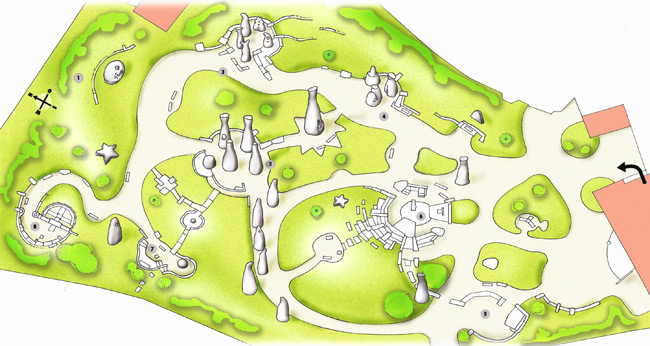The Design of the Park
Like the region as a whole, the landscape of the sculpture park is gently hilly. Paths, walls and stone squares are inscribed in it. Large painted sculptures are positioned in rows and clusters, or stand alone.
The idiosyncratic land art project was created in collaboration with nature. At the same time it is the result of architectural magic, an introduction to architectural experience that leaves open the various physical states of architecture. A missing roof and seemingly useless furniture. Here one is initiated into the deepest secrets of architectural design. The link between heaven and earth is rarely as manifest as it is in this place. A massive Waldviertel boulder extending upwards with an effortlessness made possible by art turns into a pillar of heaven.
Park Highlights
- Adventure playground
- Amphitheater and Rose Hill
- Sculpture Houses Square
- Mother Sculptures Square
- The Sleeping Poet
- Pillars of Heaven Square
- Chapel of Our Lady
- Cathedral Bells Square
- Stars’ Square
- Sculpture path with iron armatures

Makis Warlamis drew on an archaic, primeval architectural repertoire in designing his walls and squares for the sculpture park. The technique of dry stone walling creates a link to the archaeological remains of megalithic culture in Malta and central Greece. Embedded in nature, the walls and squares are like the excavated remains of an imaginary city that belongs to both the past and the future.
The park’s stone architecture dispenses with outward appearances and ornament. Its rawness creates a cosy and inviting atmosphere, radiates authenticity, and appeals to our fascination with the unfinished. It also references the long tradition of the local granite industry.
